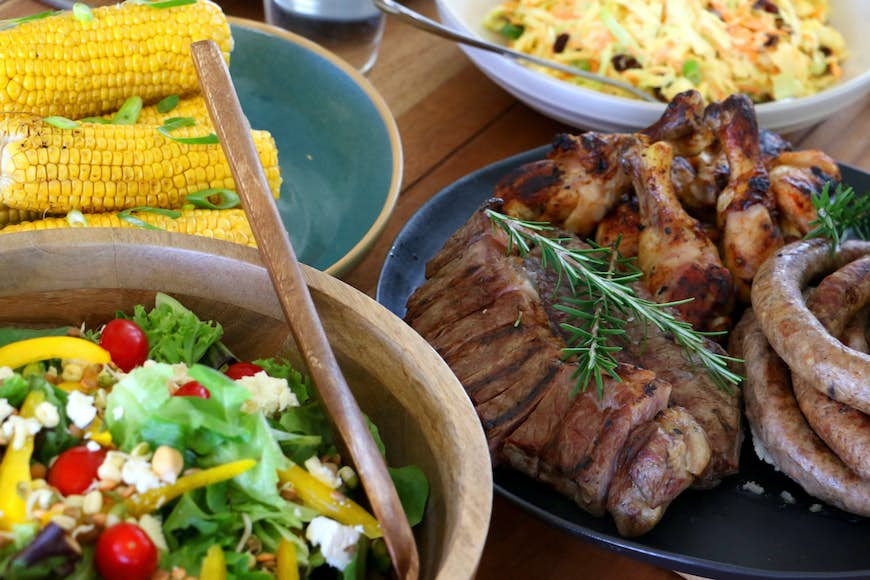South Africa’s culinary diversity reflects its multicultural society, ranging from pan-African cuisine to seafood and steaks in globally acclaimed restaurants, so eating is an excellent way to the heart of the Rainbow Nation.
The Cape was the birthplace of South African cuisine, but KwaZulu-Natal is important too: there were migrants from other African countries, British colonialist settlers, Indian indentured laborers and Mauritians who planted exotic fruits and introduced spicy tomato sauces. Learning the cultural influences that abound in South African cuisine leads to exciting explorations of the country’s many specialties.
1. Braai the beloved country
South Africa’s beloved braais are feasts of barbecued meat and vegetables, grilled over charcoal or wood. Gas would be sacrilege, as there’s a culture of camaraderie around the ritual of cooking a curly boerewors (spiced beef sausage) and steaks over the coals, ideally accompanied by a braaibroodjie (toasted cheese, tomato and onion sandwich).
Whether toasting the evening with a brandewyn en Coke or flipping chicken on a shisha nyama (township braai), most locals love cooking chops and mealies in a grid.
Where to try it: The best option is to hit a small-town slaghuis (butcher), pick up some Blitz firelighters and braai at your campsite or farmstay. Casual “bush pubs” are good places to try a braai, as are steakhouses such as the Hussar Grill chain (try the flagship in Rondebosch, Cape Town), Stellenbosch’s the Fat Butcher and Tauren Steak Ranch in Springbok.
2. Taste history in Cape Malay cuisine
Cape Malay cuisine encapsulates local history, developed by the people of the same name – now more commonly called Cape Muslims – who arrived from southeast Asia when Cape Town was a Dutch East India Company maritime outpost.
They combined spices and recipes from their homelands with European influences, producing mild and aromatic curries, accompanied by saffron rice and tomato-and-onion sambal. For dessert, look no further than a koe’sister, the city’s coconut-sprinkled doughnut – not to be confused with the Afrikaners’ plaited, syrupy and equally delicious koeksister.
Where to try it: Cultural tour companies such…
Click Here to Read the Full Original Article at Stories – Lonely Planet…
